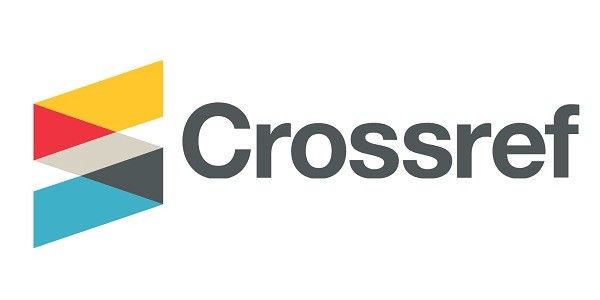Kranioplasti untuk Kasus Cedera Kepala
DOI:
https://doi.org/10.55175/cdk.v45i8.744Keywords:
Cedera kepala, kranioplastiAbstract
Seiring kemajuan teknik operasi bedah saraf, jumlah pasien cedera kepala yang mampu selamat pasca-kraniektomi dekompresi meningkat signifikan. Pasien-pasien tersebut selanjutnya akan menjalani kranioplasti untuk memperbaiki defek kranium. Keuntungan lain prosedur kranioplasti antara lain: menyediakan proteksi otak, pencegahan, atau eliminasi kolapsnya hemisfer otak atau herniasi serebri yang disebut sindrom pasca-trepanasi. Hingga saat ini belum ada material ideal untuk kranioplasti.
Advances in neurosurgery techniques will increase decompressive craniectomy survivors significantly. These patients will undergo cranioplasty to correct the cranium defects. Cranioplasty has other advantages: to provide brain protection, to prevent, or to eliminate brain hemisphere collapse or cerebral herniation called post trephine syndrome. There is no truly ideal material for cranioplasty until now.
Downloads
References
Aydin S, Kucukyuruk B, Abuzayed B, Aydin S, Sanus GZ. Cranioplasty: Review of material and techniques. J Neurosci Rural Pract. 2011;2(2):162-7
Greenberg MS. Cranioplasty. In: Greenberg MS, editor. Handbook of neurosurgery. 8th Ed. New York: Thieme; 2016 .p. 1436-43
Margules A, Jallo J. Complications of decompressive craniectomy. JHN Journal. 2010;5(1):9-12.
Yao Y, Mao Y, Zhou L. Decompressive craniectomy for massive cerebral infarction with enlarged cruciate duraplasty. Acta Neurochir (Wien). 2007;149:1219-21.
Cho KC, Park SC, Choe IS, Seo DH. Safety and efficacy of early cranioplasty after decompressive craniectomy in traumatic brain injury patients. J Korean Neurotraumatol Soc. 2011;7:74-7.
Shah AM, Jung H, Skirboll S. Material used in cranioplasty: A history and analysis. Neurosurg Focus. 2014;36(4):19.
Schuss P, Vatter H, Marquadt G, Imohl L, Ulrich CT, Seifert V, et al. Cranioplasty after decompressive craniectomy: The effect of timing on postoperative complications. J Neurotrauma. 2012;29:1090-5.
Voss HU, Heier LA, Schiff ND. Multimodal imaging of recovery of functional network associated with reversal of paradoxical herniation after cranioplasty. Clin Imaging. 2011;35(4):235-58.
Winkler PA, Stummer W, Linke R, Krishnan KG, Tatsch K. Influence of cranioplasty on postural blood flow regulation, cerebrovascular reserve capacity, and cerebral glucose metabolism. J Neurosurg. 2000;93:53-61.
Stiver SI. Complications of decompresive craniectomy for trauma brain injury. Neurosurg Focus. 2009;26(6):7.
Tasiou A, Vagkopoulos K, Georgiadis I, Brotis, AG, Gatos H, Fountas KN. Cranioplasty optimal timing in cases of decompresive craniectomy after severe head injury: A systemic literature review. Interdicip Neurosurg. 2014;1:107-11.
Thavarajah D, De Lacy P, Hussein A, Sugar A. The minimum time for cranioplasty insertion from craniectomy is six months to reduce risk of infection-a case series of 82 patients. Br J Neurosurg. 2012;26(1):78-80.
Walcott BP, Kwon CS, Sheth SA, Fehnel CR, Koffie RM, Asaad WF, et al. Predictors of cranioplasty complications in stroke and trauma patients. J Neurosurg. 2013;118:757-62
Le C, Guppy KH, Axelrod YV, Hawk MW, Silverthorn J, Inacio MC, et al. Lower complication rates for cranioplasty with peri-operative bundle. Clin Neurol Neurosurg. 2014;120:41-4. doi: 10.1016/j.clineuro.2014.02.009.
Kim H, Seng OS, Sung JK, Kim SR, Park IS, Jo KW. Analysis of the factors affecting graft infection after cranioplasty. Acta Neurochir. 2013;155:2171-6.
Faleiro RM, Faleiro LCM, Caetano E, Gomide I, Pita C, Coelho G, et al. Decompresive craniotomy: Prognostic factors and complications in 89 patients.. Arq Neuropsiquiatr. 2008;66(2-B):369-73
Shah A, Jung H, Skirboll S, Material used in cranioplasty: A history and analysis. Neurosurg Focus 2014;36(4):19
Stula D. Cranioplasty indication techniques, and result. Springer Verlag, Wien; 1984
Khader BA, Towler MR. Materials and techniques used in cranioplasty fixation: A review. Materials Science & Engineering C 2016. doi:10.1016/j.msec.2016.04.101
Downloads
Published
How to Cite
Issue
Section
License
Copyright (c) 2018 https://creativecommons.org/licenses/by-nc/4.0/

This work is licensed under a Creative Commons Attribution-NonCommercial 4.0 International License.





















